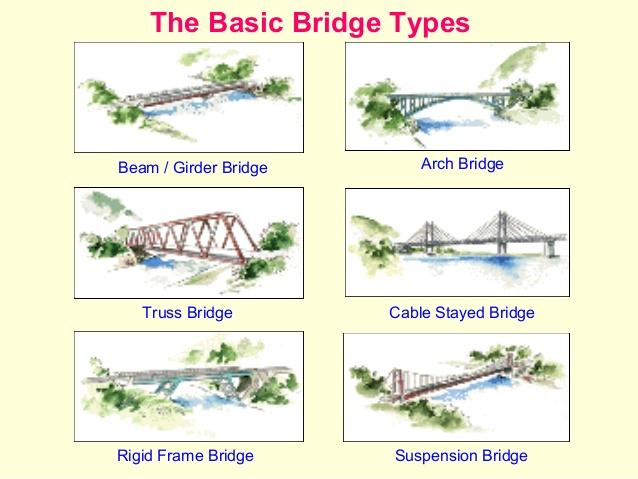Bridge designs are numerous and can be classified by their shape, structure, type of use, popularity, etc. Different scholars provide their own lists: Sometimes, certain types are united into one category or separated (Chen and Duan 20). The major applications of all bridge designs include carrying (Shah 32):
- car and truck traffic across land and water;
- pedestrians;
- light and heavy rails;
- pipelines;
- water.
In order to perform these functions, several major designs have been developed (Barker and Puckett 55-59):
- Arch bridges: This type features an arch below the bridge as the major structural element. As far as its application is concerned, these are typically car traffic, pedestrian, or viaduct bridges.
- Beam bridges: These constructions are supported by several beams that can be shaped differently and be of different sizes. They are used for carrying pedestrians, cars, light and heavy rails.
- Truss bridges: One of the most popular designs having diagonal posts above the bridge (king or queen posts). This design is used for building a pedestrian, car, pipelines, or train bridge.
- Cantilever bridges (sometimes referred to arch, truss or beam bridges): This type is basically the same as an arch bridge but features diagonal bracing instead of a vertical one. Such bridges carry pedestrians, cars, and any type of rails.
- Rigid-Frame bridges: These bridges are monolithically connected to superstructures to provide structural benefits. They are used to carry heavy rails and trucks.
- Suspension bridges: The weight of such constructions are held by ropes or cables from the vertical suspender that allows making the bridge lighter and carrying not only pedestrians but also car traffic.
- Cable-stayed bridges: This type uses cables, too, but they are connected to a vertical column (to one or several points of it). They can be used to carry pedestrians, cars, and rails.

Works Cited
Barker, Richard M., and Jay A. Puckett. Design of Highway Bridges: An LRFD Approach. John Wiley & Sons, 2013.
Chen, Wai-Fah, and Lian Duan. Bridge Engineering Handbook: Superstructure Design. CRC press, 2014.
Sampaio, Alcínia Z., and Octávio P. Martins. “The Application of Virtual Reality Technology in the Construction of Bridge: The Cantilever and Incremental Launching Methods.” Automation in Construction, vol. 37, no. 1, 2014, pp. 58-67.
Shah, Ramesh. Bridge Engineering. Venus Books, 2014.